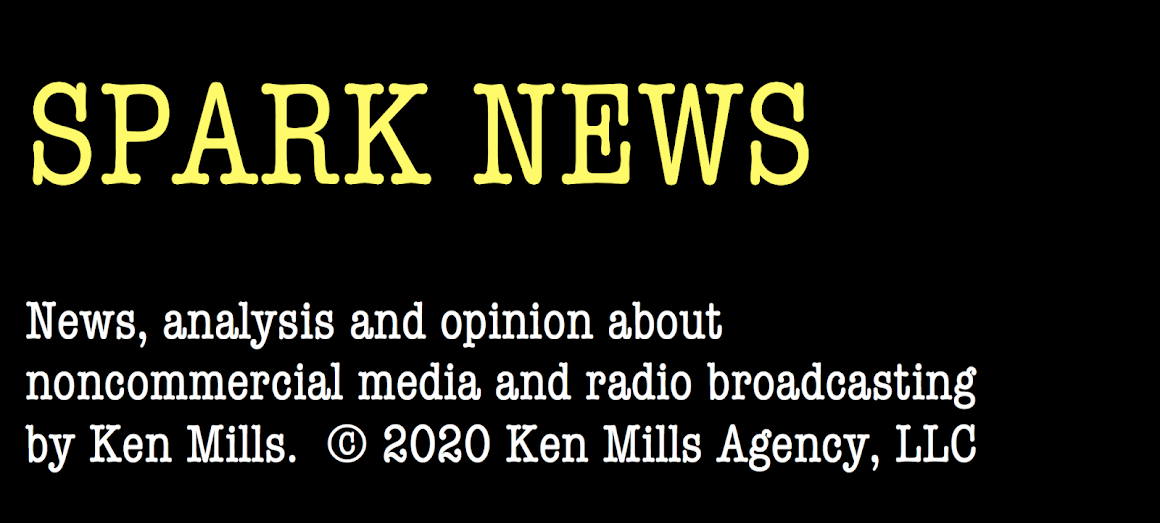You’ve
probably heard that Krista Tippett’s weekly podcast/program On Being [link] is moving its
distribution from American Public Media (APM) to PRX. On Being is one of public media’s finest productions. The program
is a perfect fit with PRX, now public radio’s fastest-growing national program
syndicator and owner of the podcast portal Radiotopia.
But why is
this happening now? Why should Tippett take
the project from APM who lunched, nurtured and promoted On Being since it began as Speaking
of Faith in 2003?
The answer,
of course, is money.
This is
another prime example of how PRX has changed the landscape for public radio
national programming. The old model (still
used by APM, NPR and PRI) is that the network charges a membership or
affiliation fee for stations to get access to programming and then charges
carriage fees too.
Under the
PRX model, stations pay a very small fee for membership and then pay carriage
fees via PRX’s Sub-Auto automated payment service. The PRX system costs programs
pennies on the dollar compared to APM.
From our
research, On Being is carried on
around 300 stations including maybe 95 billable customers. For a detailed
description of “billables” see our recent post about why Whad’Ya Know was cancelled [link].
Given APM’s
carriage fee rates for On Being, we
estimate that the program brought in over $400,000 a year via APM. Assuming the percentage APM kept for
distribution and marketing was substantial, PRX distribution brings more money
to Tippett’s bottom line. This is the
same reason This American Life left
PRI for PRX in 2014.
_______________
ALASKA PUBLIC BROADCASTERS MAY FACE
HUGE STATE FUNDING CUTS
Public radio
and television stations in Alaska are preparing for major cuts in state
support. Last week a House Finance subcommittee proposed zeroing out state
operations grants for public broadcasting. The state grants are a lifeline for
many Alaska stations, particularly in remote areas.
Alaska is
facing an enormous budget deficit due to low prices for oil. Alaskans have
provided bi-partisan financial support for public broadcasting since the 1970s. Last year the state provided approximately
$4.3 million dollars down 25% from recent years. State funding is provided for
26 noncommercial public radio and TV stations.
The best-case
scenario is a plan offered by Governor Bill Walker that cuts public
broadcasting support about 20% for FY 2017. The worst-case scenario is a proposal from
State Representative Lynn Gattis (R-Wasilla) that cuts state support to zero
after a couple of years. Gattis’ proposal would leave only $800,000 in FY 2017
for stations to pay for maintenance costs. so the roughly 25 radio and TV stations can
continue to operate, for the time being.
 |
| State Representative Lynn Gattis |
Gattis’
rationale is that Alaskans don’t need public broadcasting any more because the
Internet and cell phones have expanded access to information. Plus Alaska
Republicans want to drastically reduce the size of state government and dislike
some of the news coverage the stations provide. Gattis explained:
“Personally, before I
reach into Alaskans’ pockets to pay for government, this is my attempt at
reducing the size of government.”
A
spokeswoman for Gaddis said Alaska stations should generate more income
themselves and push for additional federal revenue. CPB currently provides
around $8.6 million for Alaska stations.
The proposals
next move to the full House Finance Committee.
_______________
PRPD & GREATER PUBLIC WORKING
TOGETHER TO CHANGE PUBLIC RADIO’S AUDIENCE
Jody Evans,
President of the Public Radio Program Directors (PRPD) and Doug Eichten, CEO of
Greater Public [link] announced an “institutional partnership” to help public
radio stations connect with younger and more diverse audiences. According to
the press release:
We know you're aware
that research findings are becoming more pointed and the hallway conversations
are growing louder. Public media's loyal audiences are aging -- fast -- and
we're not keeping pace with audiences aged 50 and younger. Our
listenership is overwhelmingly white, yet the racial demographics of the
country are changing rapidly in markets large and small.
From the press release:
We want you to know: we're on it. And we're tackling this together.
Good to know.
From the press release:
We want you to know: we're on it. And we're tackling this together.
Good to know.
_______________




There's another, oft-overlooked aspect of show distribution moving to PRX: internet connectivity vs satellite distribution.
ReplyDeleteEven for once-weekly file-delivery programs, it's expensive to distribute content over the Public Radio Satellite System (PRSS) compared to distributing over the internet-only PRX. But that's offloading a significant cost from the distributor to the station: reliability.
The satellite system is, generally speaking, highly reliable. However, internet connectivity is, generally speaking, not that reliable. Not unless a station spends a LOT of money (typically $1000+ per month) for enterprise-grade ISP connections like fiber. For many stations, this cost is "transparent" because they're part of a college campus that already has enterprise-grade ISP connectivity. But not all of them.
It's important to not overblow this too much. But it's also exceedingly annoying how many content creators are completely blind to this concept of how they're potentially dumping an extra expense in stations' laps and, almost, expecting us to thank them for it.